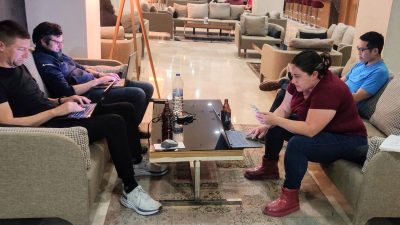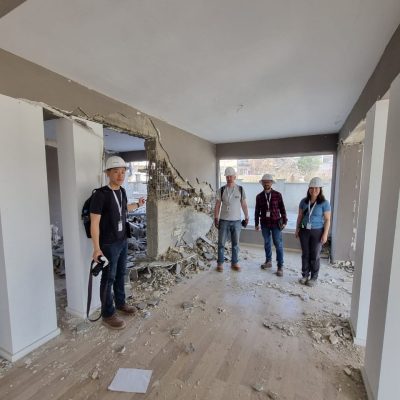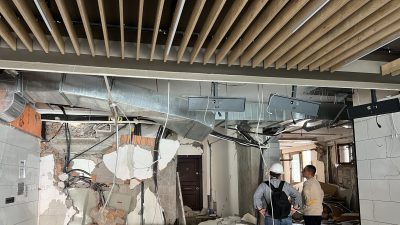March 3, 2023 – Day 4, Team 1
At a few minutes to 6am, an M5.0 aftershock hit Gaziantep, causing our hotel to shake. The quake was centered in Göksun, a city we had driven through a few days prior, located 90 miles northwest of our location. Most of us were already awake due to the time difference. It took a few seconds for us to realize what was happening and take cover. This experience served as a reminder of how disorienting the critical first moments of an earthquake can be, even when we were surrounded by evidence of the recent earthquake damage.
As we ventured back toward Kahramanmaraş, we came across a collapsed grain silo that piqued our interest. This was the first non-building structure we had encountered, and it raised the question of why this particular structure had failed while others had remained standing. Damage to concrete and masonry was a common sight, so it was intriguing to observe the failures associated with steel structures. It seems that the capacity of at the base of the vertical elements that tied the silos together was exceeded as it could be observed on the silos that remained standing. After visiting the site, we discussed how this is another example where the collapse of an agricultural facility could potentially affect the food supply and thus the community’s resilience.

Collapsed grain silo structure near Kahramanmaraş

Local distortion of structural supports for silo
Afterwards, we proceeded to a hospital located on the outskirts of Kahramanmaraş that was still under construction. Being a new public hospital, it was mandated to have base isolation. We observed that about two-thirds of the superstructure had been built, while the remaining part had isolators placed over rigid concrete elements.

Base isolated hospital under construction
The construction was at this stage when the earthquake hit. The isolators worked and the trace of the movement could be seen on the inside smooth surface, with movement measured to up to 18cm. For unknown reasons, the isolators supporting the completed construction didn’t come back to the center. They ended up about 5cm off in one direction and 2cm off in the orthogonal direction. The new isolators, where construction hadn’t yet started, will have a slightly different starting point for any future movement. We suspect that as the structure is being built, the isolators are locked into position by 4 bolts so that the isolator remains centered during construction. This could have caused for them to not move as expected and affect the recentering of the structure.
There was no damage observed in the superstructure. We were told that the hospital had been designed as a concrete moment frame as if it weren’t base isolated, hence, limiting the cost benefit of building with isolators.
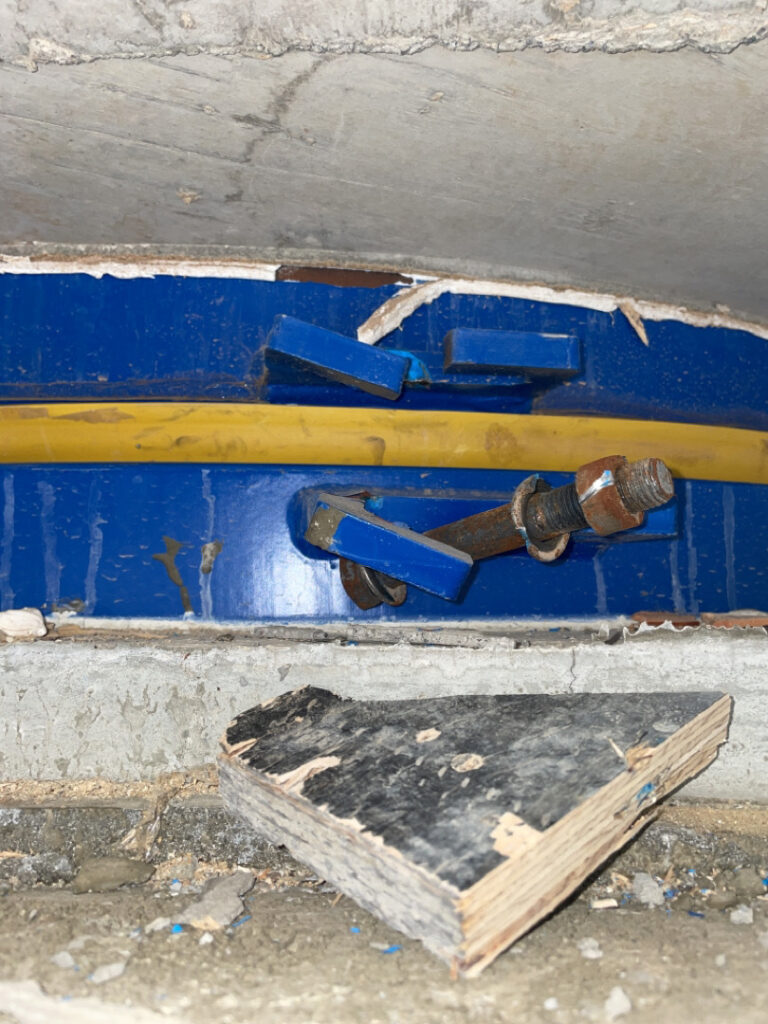
Broken base isolator lock
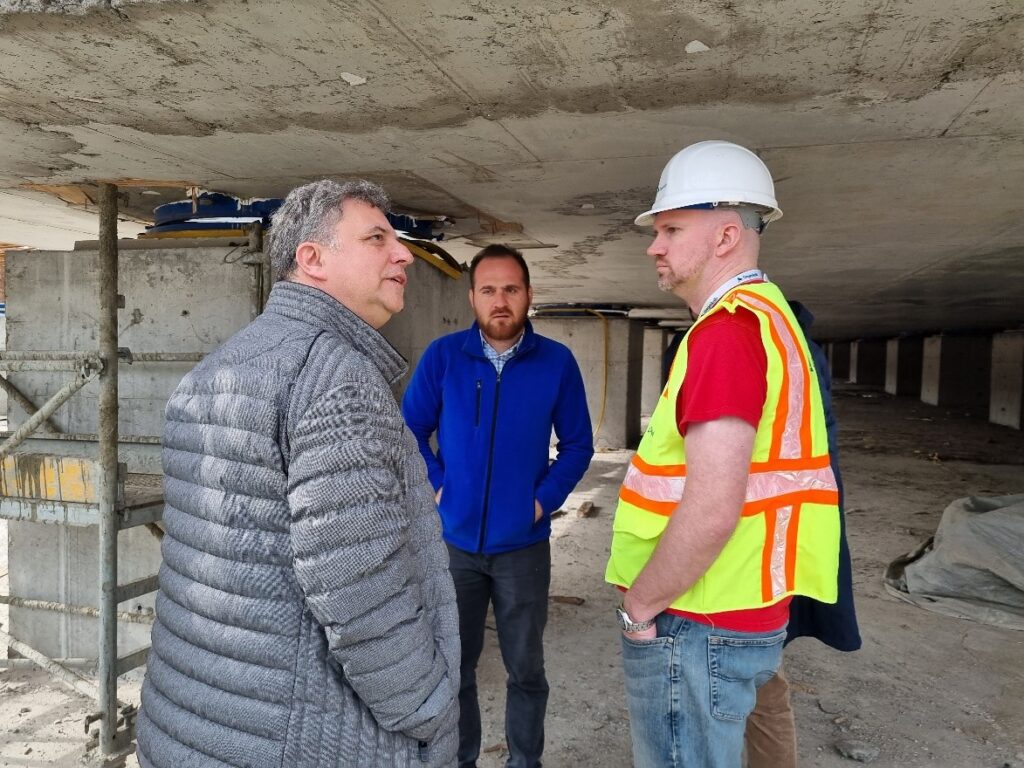
David Sommer and Rafael Alaluf discussing the design of the hospital with a local engineer
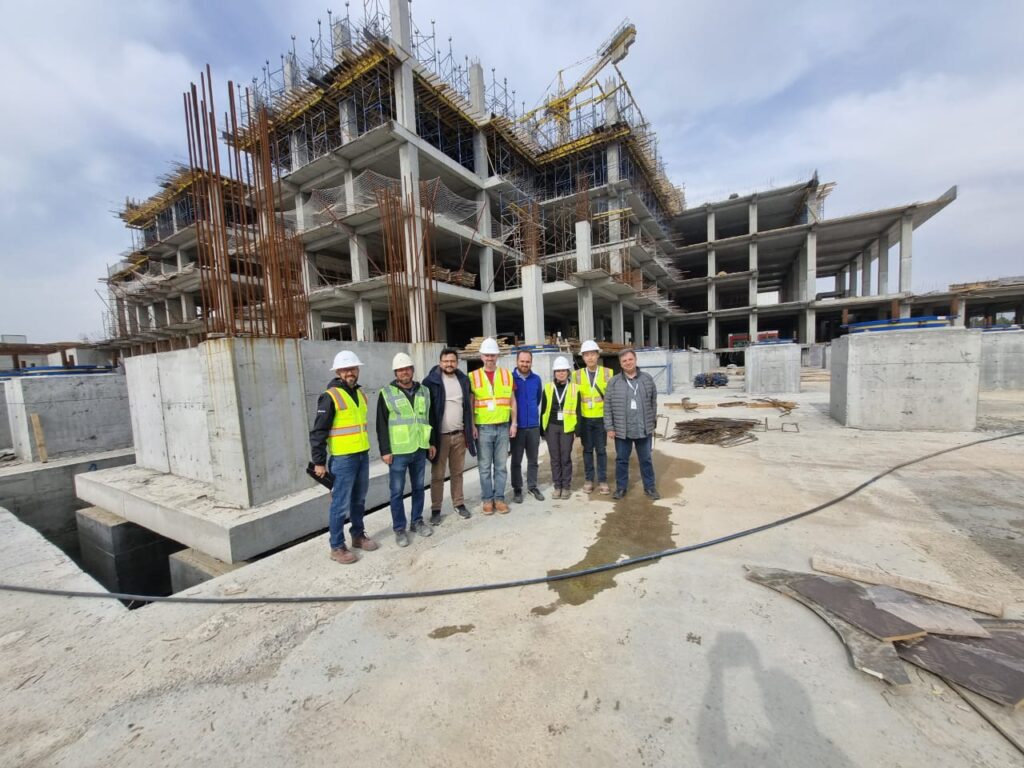
Degenkolb Team 1 during our site visit to Kahramanmaraş hospital under construction
Next, we visited an industrial complex on the side of the road. Most of them were built with precast columns that were cantilevered from the foundation and had corbels with dowels to accept the beams. The beams have large holes around where the rebar dowels would be inserted, and after being positioned, the holes are grouted to lock in the reinforcing. A few of the buildings towards the back of the street had some partial roof collapse. This type of construction is common over the area and the performance of these buildings was mixed, with some showing no signs of damage and some that were completely collapsed.
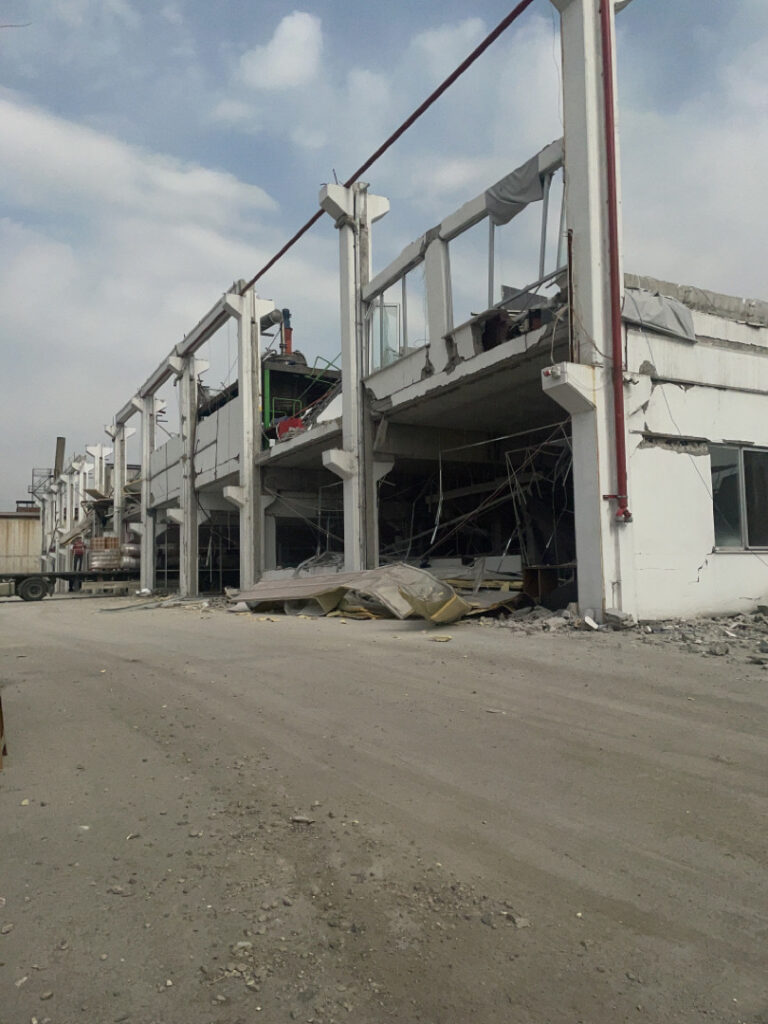
Concrete pre-cast building with roof collapse and non-structural component damage
As we walked around this industrial complex, we observed a building near the street that had collapsed. The main factory, a typical concrete frame with masonry infill building, had lost its first story and was leaning on a steel tower which was sideways on the ground. The owner was at the site during the earthquake, and he said the building came down and leaned into the tower, knocking it down as well. If it hadn’t been propped up on the fallen tower, the building might have toppled over, destroying all the equipment it held inside. The braces on the steel tower were fairly robust while the columns were small. The braces didn’t connect into the beam-column joint but instead were eccentric from the joint by a foot or so. The columns were buckled from the braces pulling on them. Now the owner was trying to find a safe way to salvage the expensive equipment inside the leaning building which by no means was an easy task. Again, this points to the need to understand resiliency from all aspects, from the impact to your business to the whole community.
The building was a processing facility for animal feed. The smell was horrible. As a funny anecdote, Jerry said, “Doesn’t it smell like pizza?” to which Jose replied that Jerry better not invite us to a pizza party ever.

Animal feed facility with concrete building leaning over a steel tower

Steel scraps from the collapsed steel tower
We visited a school located right next to a police station in which we were allowed access. A newer addition to the school had collapsed when several of the first-floor columns gave way. The upper floors were leaning precariously over the collapsed columns. Some of the collapsed columns were hanging on by strings of rebar coming out of the floors. Other columns were bent sharply just below the beam-column joints. The beams were much thicker than the columns and the hinges were observed outside of the joints showing the shortcomings of a strong beam-weak column structural system. The beam-column joints had one or even no ties visible, and the concrete had spalled off. The main school building had heavy nonstructural damage on the interior. Infill walls had large x-cracks at every panel or had fallen out, bookshelves were flat on the floor with books and papers scattered, and ceilings had fallen and covered the floors. There wasn’t much structural damage in the old building.

School building near Kahramanmaraş
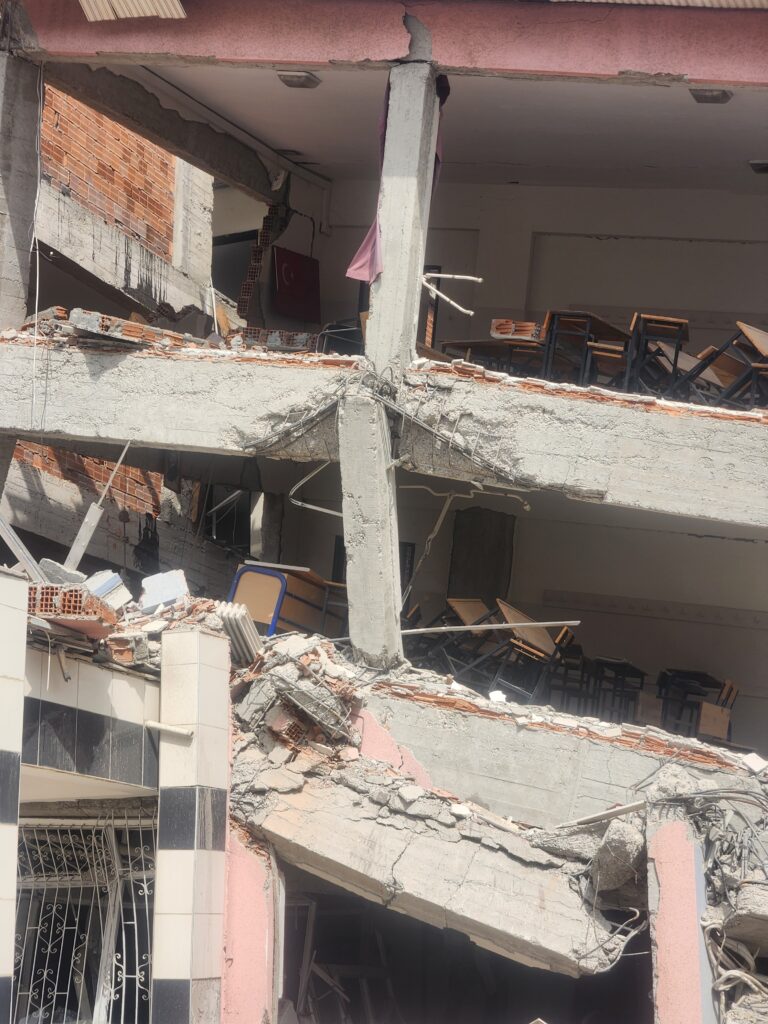
Column at school building near Kahramanmaraş
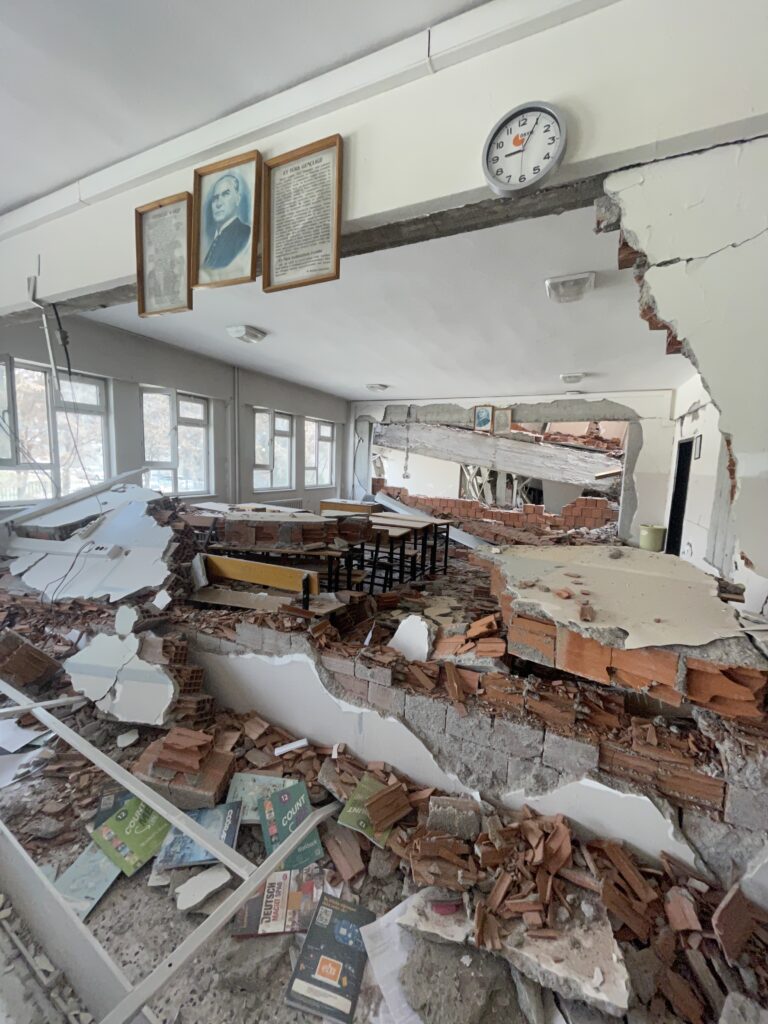
Non-structural partition damage in school near Kahramanmaraş
After leaving Kahramanmaraş, we visited the town of Nurdagi. The extent of devastation there was heartbreaking. The town was empty except for the people living in the government camps. People were seen going through the rubble to salvage whatever of their possessions they could find.
We found a building under construction where the superintendent let us inside. He had built a number of buildings in town, and he said that they all behaved similarly. Stairs got heavily damaged when connecting two floors directly, beams between walls hinged at the connections, and walls showed damage at their ends, due to flexure, at the base level. He asked us what we would do with these damaged buildings in the U.S. The building performed well considering the ground shaking it experienced, but repairs would be complicated and costly. With the scale of devastation in the town, we feared that a building like this, even if it had been undamaged, would have its construction stopped and as the town struggles to recover, the building could end up unfinished and abandoned and, in the end, being demolished.
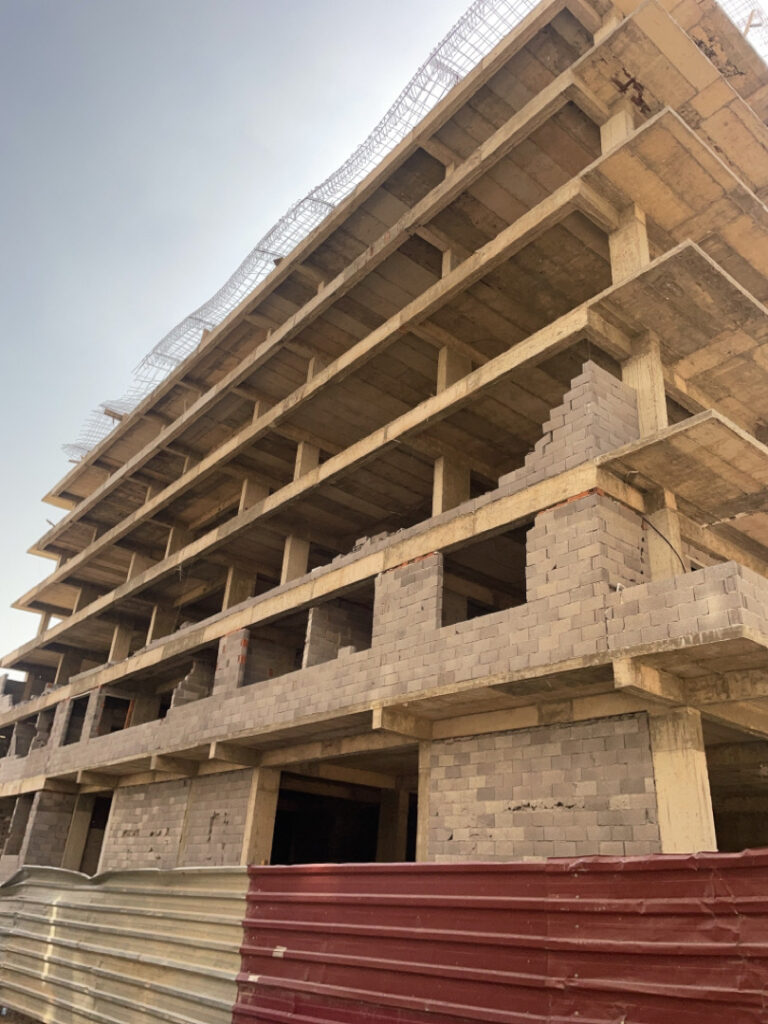
Building under construction in Nurdagi
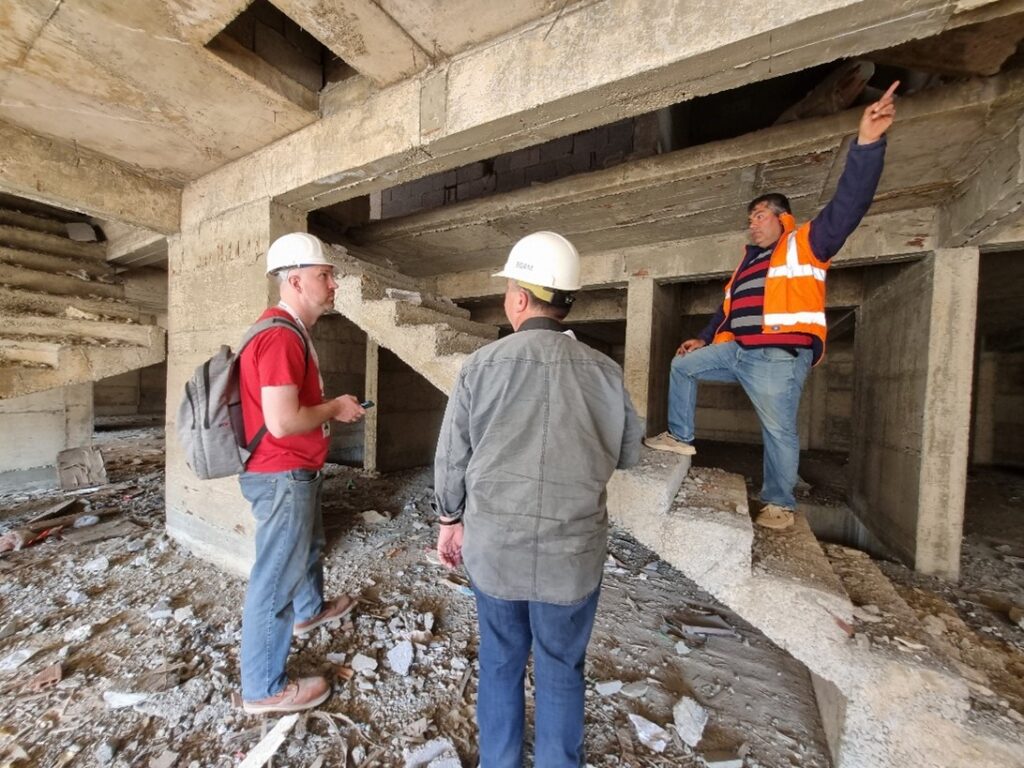
David Sommer and Rafael Alaluf discussing the design of the hospital with a local engineer
As we continued our drive near Nurdagi, many aspects of the infrastructure in town were observed to be damaged. Light posts collapsed, an overpass over a river showed damaged to their piles, water tanks over the buildings had fallen. With the observed level of damage, it is uncertain the time frame it will take to reestablish basic services so that the residents of the buildings that were undamaged, can return to their homes. If one accounts for the people that tragically lost their lives during the earthquake, the damage to the buildings and infrastructure, it is also uncertain if this town will ever get back to its feet or if it will remain a deserted town and a stark reminder of the danger that natural hazards pose to unplanned, unsupervised and non-engineered construction and development.

Damaged roads near Nurdagi

